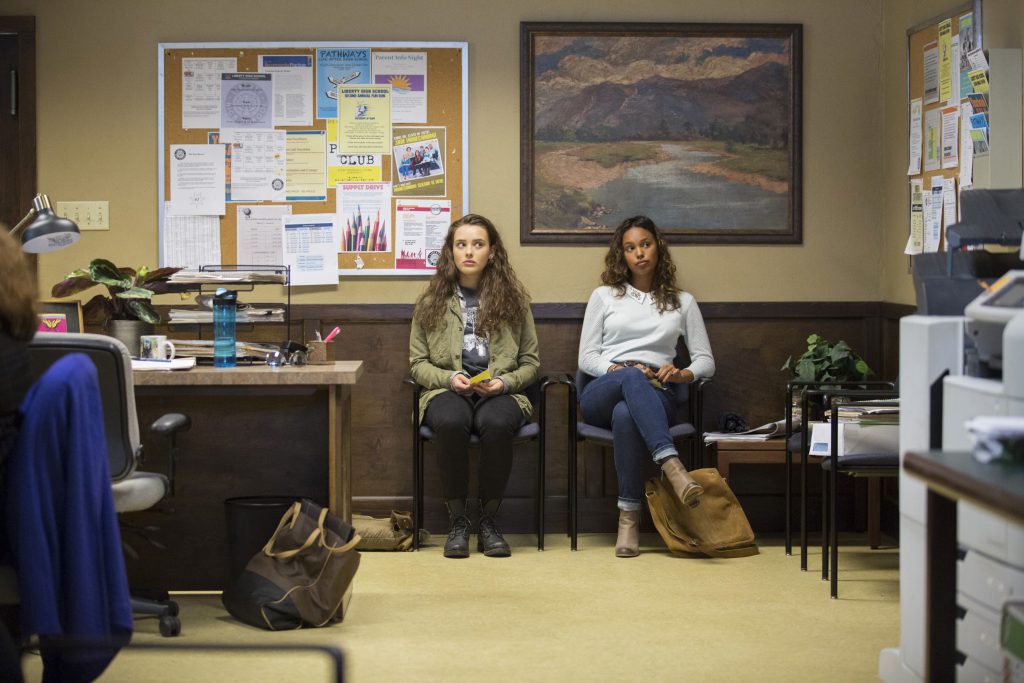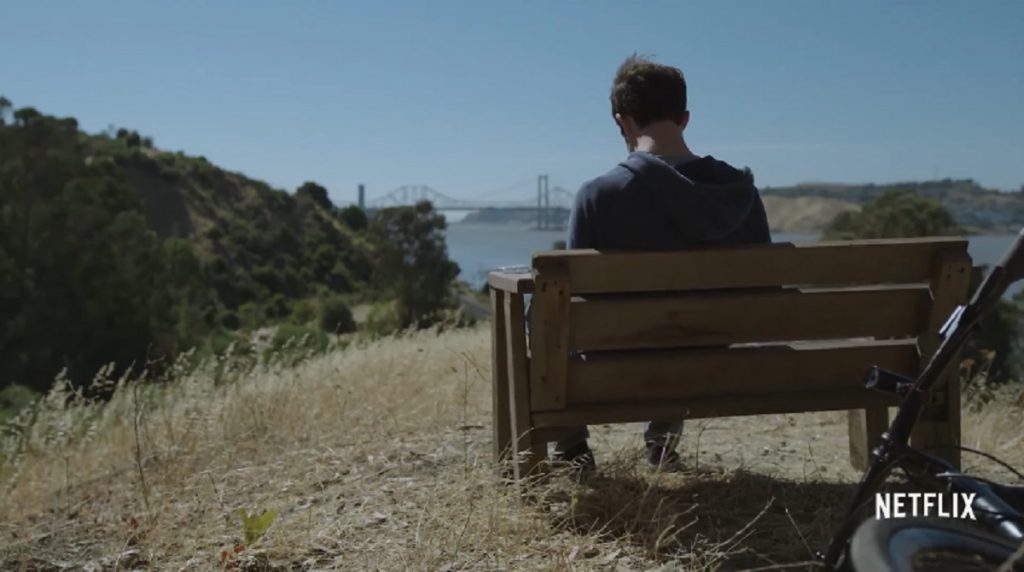
This post comes to us from Heather Strong Moore.
https://www.youtube.com/watch?v=JebwYGn5Z3E
What was your worst day? In what ways do you still think about it? How does it still effect you now? We all carry around our own personal blend of wounds and disappointments. This may be a factor in the show 13 Reasons Why becoming such a phenomenon among young people. A Netflix original, it has only been out for a couple of weeks and already is one of the most viewed series they’ve created.
Based on a book by the same title from author Jay Asher, this show follows a teenage girl named Hannah Baker. You learn at the beginning that Hannah has committed suicide, for reasons that are unclear to the people around her. Before her death she recorded 13 cassette tapes explaining what led her to the point of taking her own life, each directed at a specific person and documenting the hurtful nature of their actions towards her. Through Hannah’s narration you relive the last year and a half in her life and gradually see the full picture of what contributed to her depression and suicidality. It is a very sobering take on the effects of bullying and trauma, and the ways that we impact one another.
In general I have quite mixed feelings about the show. I would not characterize it as “enjoyable” to watch. It unflinchingly exposes the ugliness of the thoughtless and dismissive ways we can treat one another, as well as how easily someone can become isolated and fearful. Part of the draw of the show is that, sadly, most of what it portrays about high school relationships is accurate. Young people are deeply resonating with it because it feels very relatable to their own lived experience. The storylines deal with everything from petty teasing, to stalking, to sharing intimate photos without someone’s consent, to harassment, to sexual assault. It is all very painful to watch, and I don’t blanketly recommend it (see bottom for content guide.)
It raises some concerns for me that it might inspire copycat scenarios. On top that, many viewers are trivializing the content with memes or 13 Reasons “Promposals” which seem to miss the important message the show is communicating. Still, the majority of the audience is understanding the severe implications that our behavior towards others can produce. Everyone experiences more than we realize on the surface. We have the opportunity to either build people up or tear them down.
It was fitting that Ivan and I watched the show during Holy Week, the lead-up to Easter. As I participated in a Good Friday service, 13 Reasons Why was on my mind. Good Friday also invites us to take an unflinching look at the darkness within and around us. It is meant to offer intense reflection on what it is that sent Jesus to the cross. It was our sin, our disobedience, and our failures that warranted a death sentence, a verdict which Jesus took upon Himself in our place. Everything that tempts us to despair was nailed to the cross that day.
He is the atoning sacrifice for our sins, and not only for ours but also for the sins of the whole world. – 1 John 2:2
Many of us know this message: Jesus died for our sins to offer us forgiveness and mercy. That is always very good news. What we don’t often think about is that if Jesus died for the sins of the whole world, by implication, He also died for the sins committed against us. Jesus took our place to absorb the punishment that we deserved, and the abuses that we didn’t. His death covers the sins we commit and the sins that others have inflicted upon us. When Jesus says, “This is my body, given for you” He offers to trade places with us in every way that we need. He not only sees our sins and says, “I committed those acts,” He also looks at our wounds and says, “That happened to Me, those sins were directed at Me.” That includes taking on the ways that others have insulted us, betrayed us, ignored us, discriminated against us, abused us.
On the cross Jesus incurs all the damage those experiences create, and offers us His freedom and wholeness instead. In trading places with us He identifies with all our sufferings and allows us to move forward in the security and healing of God’s blessing, “This is my beloved child, in whom I am well-pleased.” (Luke 3:22) When you bring to mind the worst ways that the sins of others have played out in your life, you can imagine them happening to Jesus. That doesn’t mean living in denial of your past, but you get to live now in the fullness of personhood that Christ always experienced. Always knowing that you are fully accepted and fully loved by God and that nothing will ever change that.
But Jesus doesn’t stop there. Dying on the cross was a gift, but so is the resurrection. Christ’s resurrection from the dead is the cosmic game-changer. It means that suffering, separation, and death can never define us. They don’t have to be the final word. There is no evil strong enough to keep Jesus or us in the grave. Because Jesus lives, nothing can truly crush us.
Here’s something we don’t always notice, Jesus comes back with His same scarred body (John 20:24-29). He doesn’t come back just in spirit form or with a brand new body that has no prior history. Jesus comes back with the same body that endured extreme brutality but is still whole. The resurrection teaches us that there will come a day when we will inhabit our bodies with complete peace and unity. No longer struggling with mental/emotional anguish, no longer in bondage to loneliness and anxiety, no longer haunted by memories of abuses our bodies endured. We will be united with our bodies and move in God’s world without fear, without shame, and without pain. The promise of identifying with Christ will become a reality in our physical, lived experience.
That is the good news that I kept wanting to share with Hannah, and that I want to share with you. Life is hard. Other people do terrible things and we do plenty of terrible things back. But that isn’t the end of the story. None of us are defined by our worst day. There is no sin or pain so great that Christ did not claim it as His own. And when the dead in Christ are all raised, you’ll live in your body that weathered the storm and is now fit for eternity.

Content guide: Be advised that this show depicts multiple scenes of graphic sexual violence. The show creators’ stated goal is to show the horror of assault to help observers understand how traumatizing it is for survivors, but watching it may not be worth it for some. Hannah’s suicide and death is also depicted. In Beyond the Reasons (an extra feature on the Netflix season) the creators explain in helpful ways why they chose to film it this way and they had many mental health care professionals consulting on the project. If you have personal experience with losing someone to suicide, this scene may be deeply painful to experience. Use discretion in your viewing, this show will not be appropriate for all audiences.

COMMENTS
Leave a Reply














